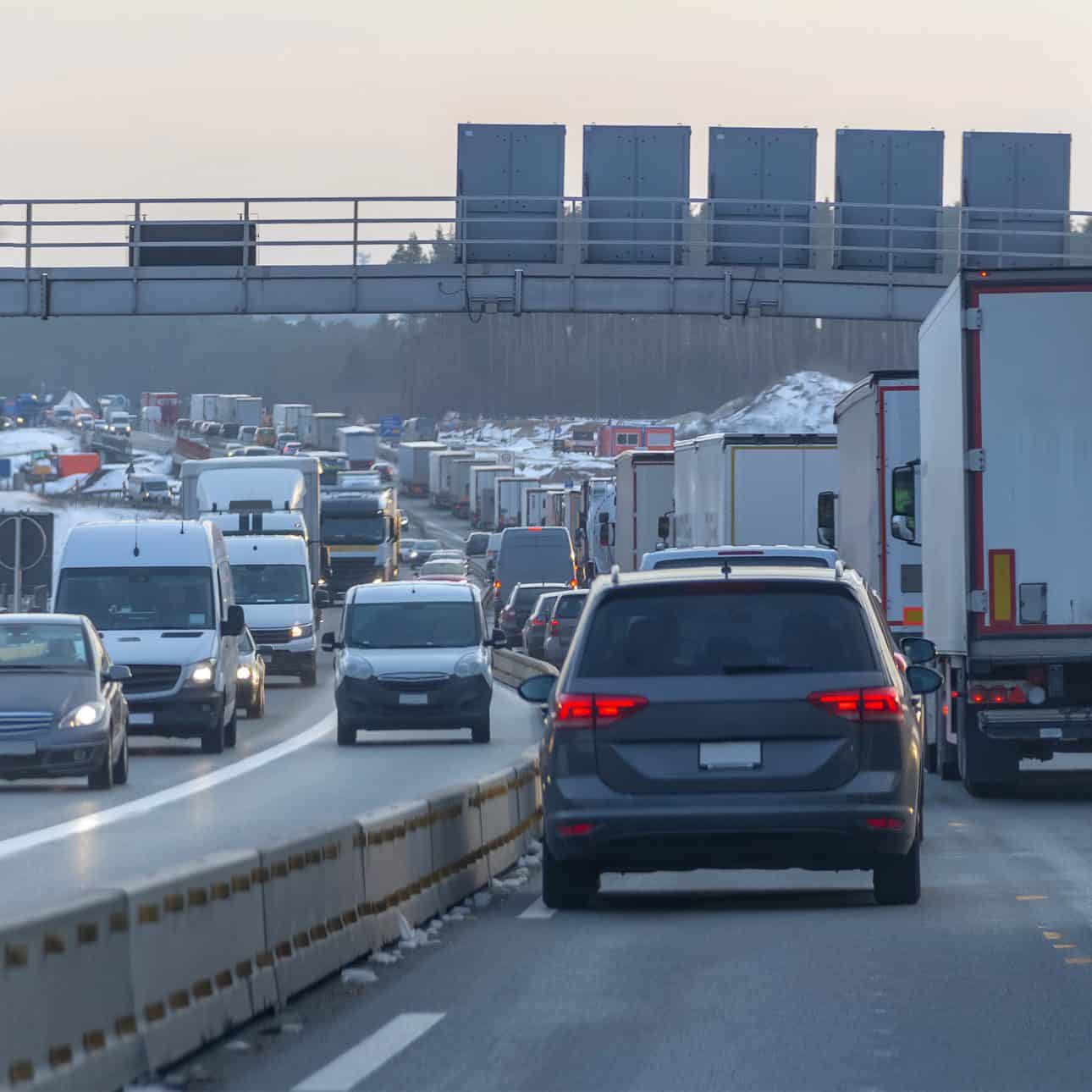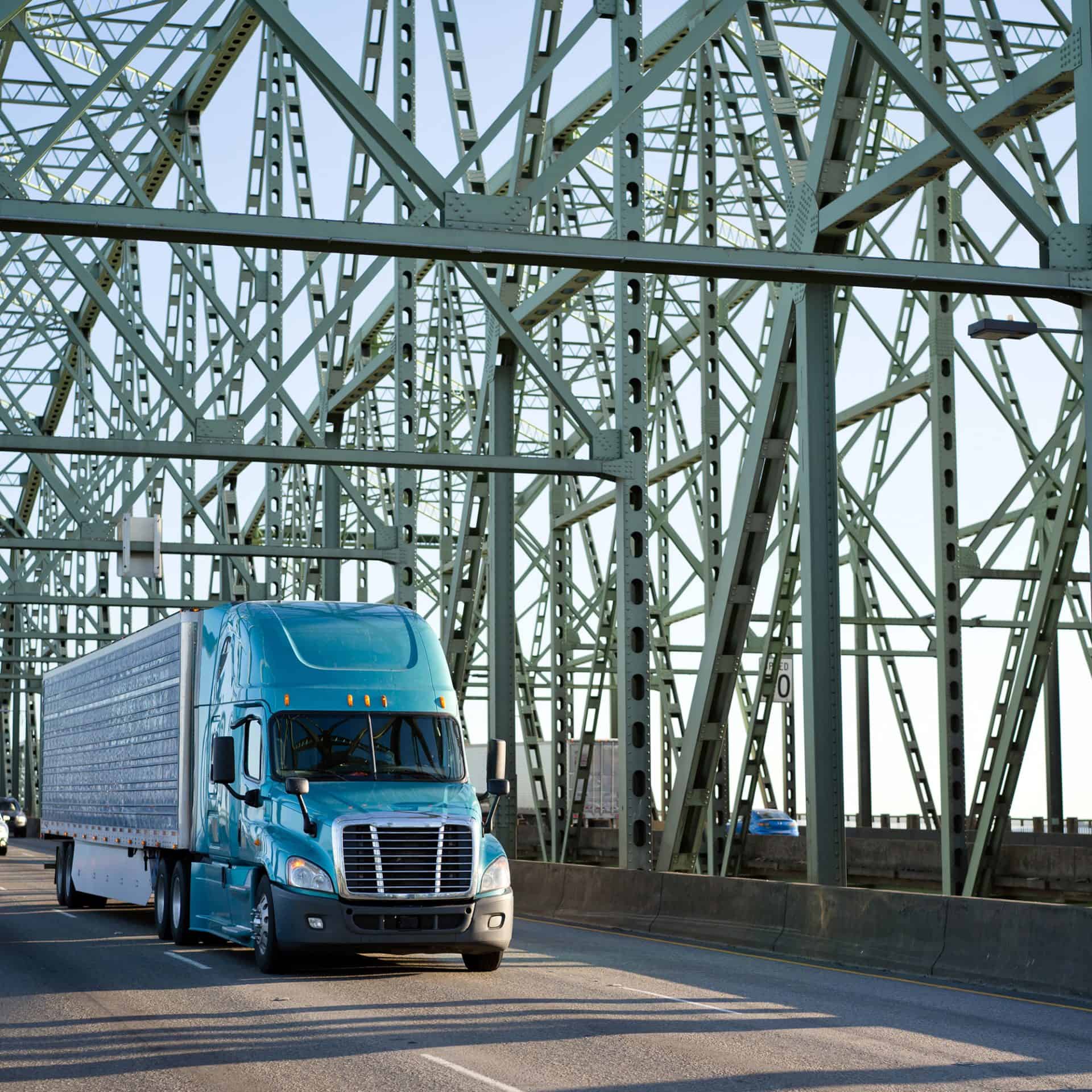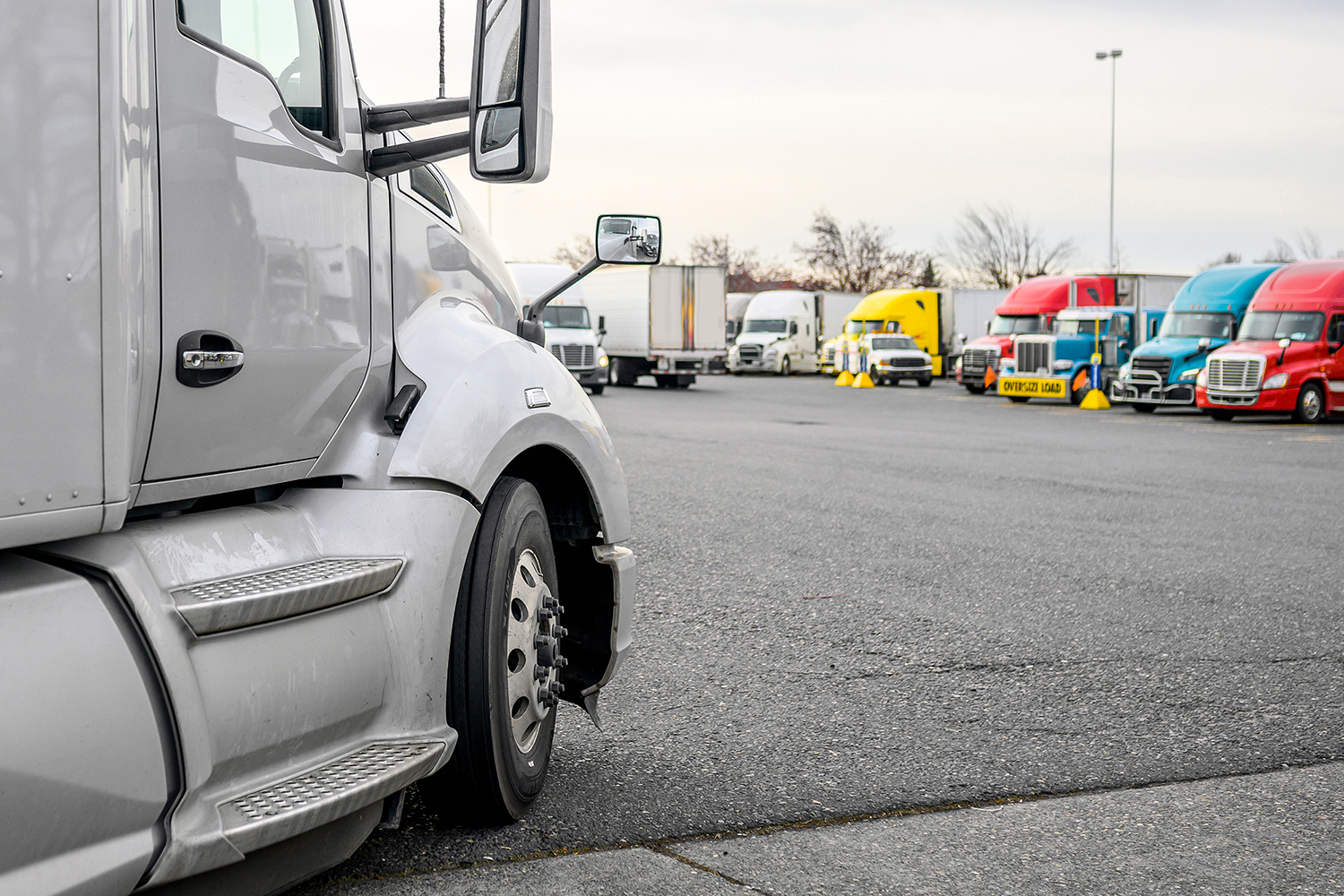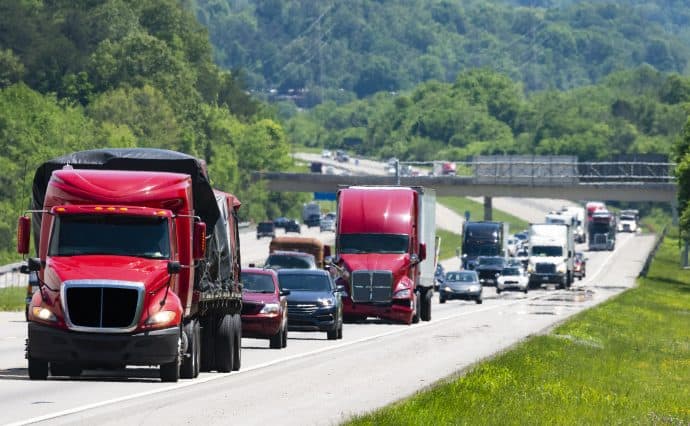
Accelerating net-zero highways with data-driven analysis
The transportation sector is the largest contributor of greenhouse gas emissions in the U.S., contributing 27% of the nation’s total GHG every year. By implementing new ideas and technologies to transform highway infrastructure, The Ray is playing a critical role in reducing this environmental damage and creating a sustainable, net-zero future for transportation.
“Decreasing the pollution generated by long-haul truck traffic on interstate highways is an urgent priority,” says Allie Kelly, executive director at The Ray, a nonprofit testbed for net-zero transportation. “Nearly one-third of the pollution that is causing climate change comes from the transportation sector, and medium- and heavy-duty trucks produce a quarter of those emissions. Then there’s the fact that 70% of American freight is transported on trucks, and the freight trucking market is experiencing consistent growth. If we’re going to solve the climate crisis, we have to solve the truck problem.”
The Ray works with transportation agencies in 25 of 50 states to enable infrastructure technologies that promote net-zero transportation, such as electric and hydrogen fuel cell vehicles.
“We are the bridge between the public transportation sector and private sector infrastructure innovations,” says Kelly. “By partnering with Altitude by Geotab, The Ray can help transportation planners uncover powerful contextualized insights on truck movement which inform data-driven decision making around infrastructure investments.”
The U.S. Department of Transportation is funding states’ strategies for electric charging infrastructure along interstates and highways to make electric vehicles more practical, efficient and attractive, especially for medium and heavy-duty vehicle operators. While federal support for these projects is significant, transportation agencies need better data and technical know-how to create robust project plans. By using Altitude’s data on freight vehicles, The Ray can help agencies determine the optimal locations for significant infrastructure investments in the electrification of transportation.
The challenge:
Improving planning and analysis for sustainable transportation infrastructure
The federal government is making historic investments in sustainable infrastructure, providing $5 billion over five years for states to deploy electric vehicle chargers, and $2.5 billion for alternative, low or zero-carbon fueling. To receive these funds, states have submitted National Electric Vehicle Infrastructure plans to the Federal Highway Administration.
“This money is definitely creating a need for data and expertise in this area,” says Laura Rogers, deputy director at The Ray. “While there are few zero-emission freight trucks on the road today beyond a few pilot vehicles, they’re in the pipeline. We’re working with transportation agencies to prepare the infrastructure for these trucks as quickly as possible, so there are no barriers to their introduction.”
Yet many state and local transportation agencies lack the internal resources to analyze and plan appropriately for this new infrastructure.
“Transportation agencies have highly skilled people who know how to build and maintain roads and bridges, and many are proficient in intelligent transportation systems,” says Rogers. “They know logistics corridors and major truck routes, for example, and do truck counts to estimate freight volumes. What agencies don’t readily have is the data insights about truck movement patterns to drive decisions for building freight charging infrastructure.”
To understand where the infrastructure investments are needed the most, planners need a holistic view of truck movement data to understand:
- Where the freight trucks are coming from
- Where the trucks are going
- Where they are stopping
- How long trucks are stopping
“Agencies need the data, tools and technical assistance that will accelerate their analysis and planning, giving them confidence that the design, quantity and locations of the charging infrastructure they build will best serve their customers,” says Rogers.

The solution:
Gain deeper insights with contextualized truck movement data
Building the infrastructure for the net-zero truck fleets of the future is an expensive proposition for transportation agencies. To decrease the up-front risk placed on these agencies, The Ray and Altitude by Geotab are partnering to deliver the data-driven analysis that agencies need to make informed investment decisions.
The data comes from Altitude, an easy-to-use transportation analytics platform that allows The Ray to access contextualized insights on freight vehicle movement. Altitude offers both a micro and macro picture of truck journeys.
“Until now, transportation agencies haven’t been able to determine exactly where trucks are going, where they’re stopping and for how long,” says Rogers. “Altitude enables planners to go beyond counting trucks and rough projections to uncover the nuanced minutiae.”
Earlier this year, The Ray and Altitude by Geotab announced the findings of a joint fleet movement study. Altitude by Geotab provided data visualization tools, such as graphs and heat maps, for truck travel on two pilot highway corridors: one within Georgia and one between Texas and Georgia.

The heat map above shows the stops that occurred on the routes between the two corridors. Yellow and orange dots represent the stops trucks made on the routes from Dallas, Texas to Atlanta, Georgia, and from Port of Savannah to Atlanta, Georgia, respectively. Size of dots indicates the percentage of stops made on that geo point (at geohash level 5).

The results:
Delivering detailed data to expedite net-zero transportation
This study produced accurate truck movement data from nearly 6,000 trucks and 83,000 observed journeys that transportation agencies can rely on in planning and funding their freight charging infrastructure. With Altitude, we got real-time, real-place, real-world information on how trucks are using today’s highways, so we can predict the right investments for tomorrow.Laura Rogers, Deputy Director, The Ray
Geotab ITS’ pilot study with The Ray confirmed the value of a data-driven approach to investing in charging infrastructure. Altitude analytics revealed unique truck movement patterns for each of the two study corridors. On the long-haul corridor from Dallas to Atlanta, vehicles stopped at multiple, scattered locations, whereas on the Savannah to Atlanta corridor, vehicles stopped at a few, distinct locations.
“This kind of specific information supports the strategic positioning of charging infrastructure, resulting in maximum convenience for freight trucks and encouraging faster adoption of net-zero vehicles,” says Kelly. “The data was well-received by the Georgia Department of Transportation, and we’ve already had conversations about how to carry the Geotab ITS partnership forward to other regions of the country.”
In addition to informing the placement of charging infrastructure, Altitude data can be combined with additional technology designed for net-zero transportation, including:
- Solar mapping tools for determining the interstate right-of-way land best suited for solar array placement
- Dynamic charging lanes for wireless charging on the go
“Truck travel trend data from Altitude can and should be overlaid with transmission and distribution maps that tell us where there’s enough solar energy for high-powered charging stations,” says Kelly. “The data is also essential to developing charging lanes for electric vehicles in motion. It equips us to make a better argument for investing in this technology, which will appeal to those operating freight trucks looking to have less battery weight and more payload on board.”
The next step for The Ray and Geotab ITS is to collect truck travel data from corridors across the country, says Kelly. “By helping transportation planners develop the right sustainable infrastructure in the right place, we’re moving the sector closer to our vision of net-zero transportation.”
Learn more about how Altitude’s Origin & Destination product can help agencies understand the true purpose of trips on their roads through comprehensive insights into aggregate freight activity.

Let's talk
Learn more about how Altitude can help transportation agencies understand vehicle movement trends.


